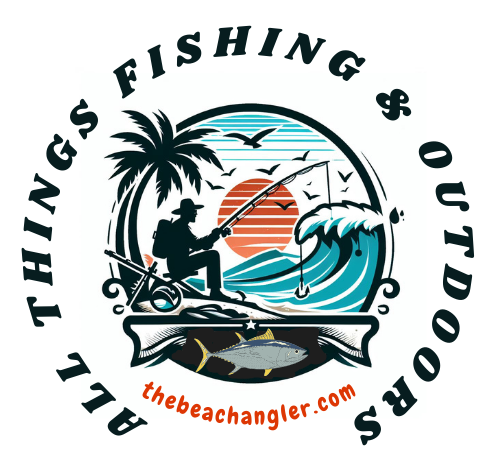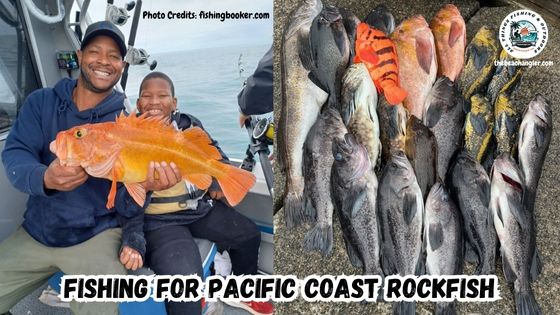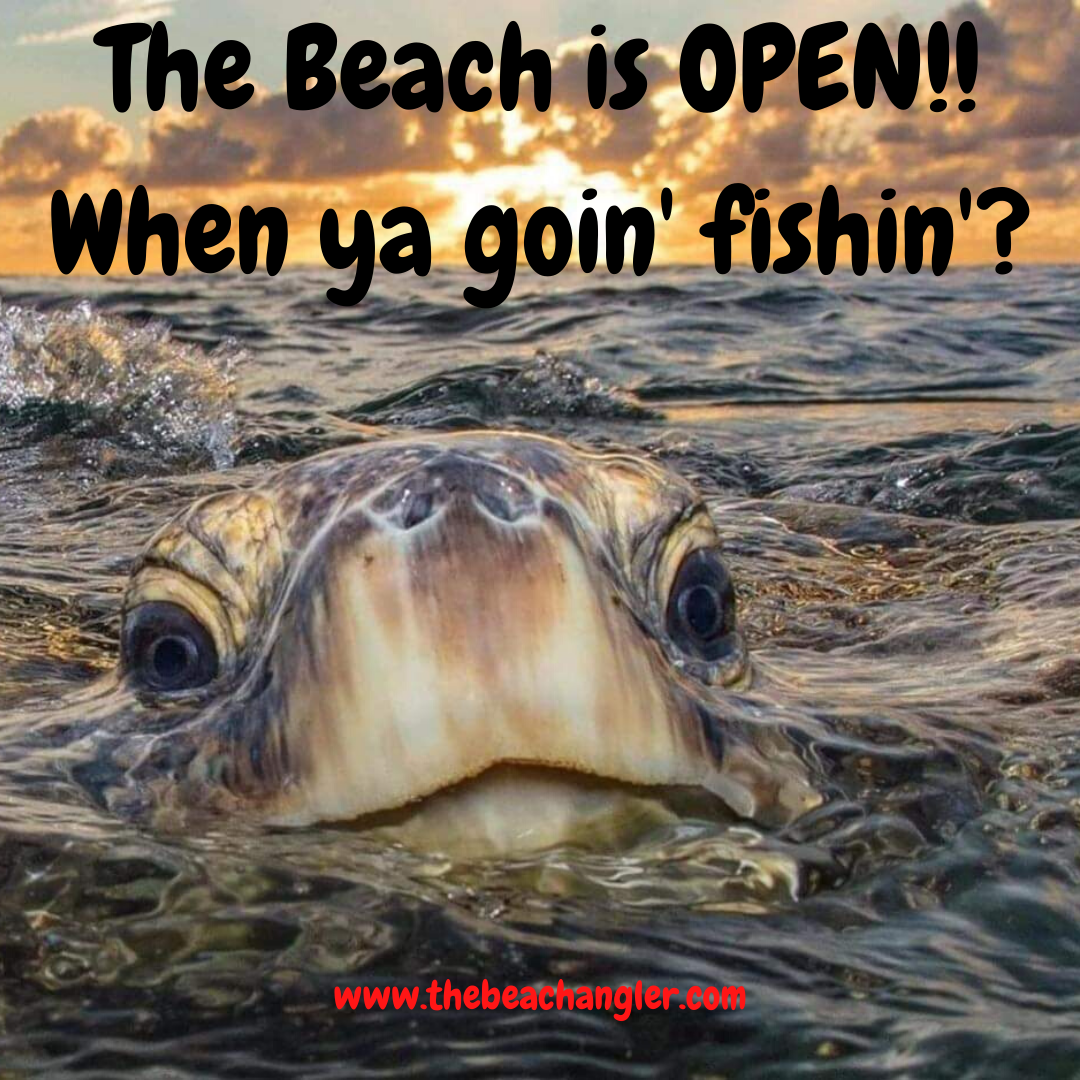Fishing for Pacific Coast rockfish can be one of the most rewarding ways to spend time on the water. I’m always impressed by the diversity of rockfish species and the challenge of finding the right spots and methods to bring in a great catch.
QUICK LOOK: Primary Challenges when Fishing for Pacific Coast Rockfish
- Dealing with Depth: Fishing deep, sometimes over 300 feet, means you’ll want heavier gear and bigger jigs to get to the bottom quickly. Electric reels can help speed things up, but they aren’t required for many productive spots.
- Tides and Currents: Strong tidal currents sweep bait and fish along structure, but they can also make it tough to keep your lure near the bottom. I try to time trips for slower-moving tides and fish the edges of high or low tide for best action. Planning ahead by checking tide charts can make or break your day.
- Regulations: Checking local regulations is really important since some rockfish are protected, need to be released, or have size or bag limits. I keep the current state fishing app or pocket reference on hand to stay legal and ethical. Every angler should do their part in helping rockfish numbers bounce back from decades of overfishing.
- Lost Gear: Rockfishing leads to lost tackle, so I carry plenty of backup rigs, hooks, and jigs. Using breakaway rigs or lighter leaders below the weight preserves the rest of my rig if I get snagged. Being prepared keeps my frustration to a minimum when the rocks claim yet another sinker.

In this article, I’ll share what I know about identifying rockfish, picking the right gear, and using proven fishing techniques to help you get started or improve your Pacific Coast rockfish trips. Whether you’re an old hand or just beginning, there’s always something new to pick up with rockfishing, from understanding the habits of each species to mastering your rig.
Understanding Pacific Coast Rockfish
Rockfish are a varied group of fish, with over 70 species living along North America’s Pacific coast. These fish are part of the Sebastes genus. They can be found from Alaska down to Baja California.
Some popular species I often target and see caught on local boats include black, blue, brown, and copper rockfish, along with deeper species like yelloweye and Pacific ocean perch. Most rockfish have a firm texture and a mild flavor, making them a favorite among anglers and cooks alike.
Knowing the differences between species is really important both for responsible fishing and for enjoying the best qualities each one has to offer at the table. Understanding local ecology and regulations for rockfish can mean the difference between a memorable day on the water and an accidental rule-breaker.
Species can be divided into three general categories: nearshore, deepwater, and a few notable in-betweeners. Here are some examples:
- Nearshore Rockfish: Black, blue, brown, calico, copper, and quillback rockfish are found in shallower waters and often around kelp beds, jetties, or rocky structure close to shore.
- Deepwater Rockfish: These include yelloweye, bocaccio, and Pacific ocean perch, and they tend to be found anywhere from 200 to over 700 feet deep.
- Other Notable Rockfish: Species like canary, darkblotched, and harlequin rockfish add color and variety to the catch, but some of these have extra fishing regulations because of their slow-growing nature.
Identifying specific species can be tricky, especially with the subtle differences in color and pattern. I rely on up-to-date field guides, state fish and wildlife identification charts, and even local tackle shop advice to help make sure I know what I’m keeping.
Since some protected rockfish look a lot like legal species, I always keep a laminated chart on the boat. It’s become second nature to double-check before tossing any rockfish in the cooler, especially when fishing new areas or with unfamiliar companions.
Starter Gear and Equipment Needed for Rockfish Fishing
Picking the right gear affects your chances of success with Pacific Coast rockfish. I usually suggest a medium to heavy action rod rated for 20-50-pound line, depending on the depth and size of fish you’re targeting.
For deep water, a rod with a sensitive tip helps you feel bites when dropping jigs or bait over 200 feet. It’s also good for feeling out the rocky terrain on the bottom and preventing too many snags. For reels, I use a sturdy conventional or baitcasting reel with a high line capacity and solid drag.
I find that braided line works best because of its thin diameter and low stretch. This lets me feel the bottom and quickly react when a fish bites. I usually use 30 to 50-pound braid connected to a fluorocarbon or monofilament leader for abrasion resistance and a bit of give to fight fish near rocks.
Basic terminal tackle includes a variety of jigs (like Colt Sniper, Tady, or Diamond jigs) in the four to twelve ounce range, depending on how deep you’re fishing. Bring extra hooks, sinkers, and swivels, since fishing around rocky structure means you’ll lose gear occasionally. A small box with barrel swivels, split rings, pliers, and a hook sharpener goes a long way toward keeping your setup dialed in during a busy day.
Rockfish Jigging and Lure Selection Basics
I’ve had the best luck jigging for rockfish. Jigging is a simple but effective technique that involves dropping a weighted lure straight down to the bottom and then snapping it up a couple of cranks before letting it fall again. Rockfish tend to grab the jig as it moves off the bottom, mistaking it for a fleeing baitfish or squid.
- Jig Selection: Heavier jigs (6-12 ounces) are best for deep water at 200 feet or more. For shallower spots or less current, lighter jigs work fine. Jig shapes that create a flash or vibration draw more bites.
- Bait Addition: Sometimes I’ll tip the hook with a strip of squid or a soft plastic to add scent and texture. That trick seems to work especially well for stubborn fish or when the water’s cloudy.
- Colors: Natural colors like white, brown, and green are reliable, but I always bring a few bright orange or pink jigs for murky conditions. Changing up lure color is a quick way to find what’s working that day.
Swimbaits, metal spoons, and even bait rigs with shrimp flies or cut bait catch rockfish, too. I switch it up when one lure is having a slow day or to target certain species. Don’t be afraid to improvise or tie your leader rigs with high-low setups, as these can sometimes outfish standard jigs.
Locating Productive Rockfish Habitat
Pacific rockfish love hard bottom areas; places where rocks, ledges, or boulders break up the otherwise sandy seafloor. I look for rocky reefs, kelp forests, or artificial structures like jetties and shipwrecks.
These attract both bait and rockfish, making them solid options when searching unfamiliar areas. A little bit of research the night before a trip, like checking local forums or using Google Earth, can uncover some new likely spots worth trying.
Depth range is an important factor. For deepwater species, I focus on spots between 200 and 350 feet deep. Nearshore rockfish can hang out in much shallower water, even as shallow as ten feet near jetties or rocky points.
Often, the best areas are right where steep drop-offs meet the reef structure. It’s amazing how certain pockets will hold fish year after year, especially if there’s both food and a little current. Studying marine charts, talking to local anglers, and using a fish finder all help me track down the best structure.
Rockpiles, pinnacles, and drop-offs almost always hold fish. If fishing from a boat, I try drifting over the rocky spots and keep a close eye on the fish finder for arches or stacked marks near the bottom. If you don’t have electronics, linking up with local forums or collecting GPS coordinates provided by fishery departments is a great way to get started.

On-the-Water Tips: Boat and Shore Rockfishing
Fishing from a boat gives me more control over my presentation. I can drift naturally with the current or use the motor to hold position over a productive area. If the drift is moving too fast, I might use a sea anchor to slow things down.
Repeatedly drifting the same spot helps me find where schools are feeding. In deeper water, there’s often a mix of species on the same spot, which keeps things interesting and the action steady. Saving a waypoint with your GPS can make it easy to hit productive drifts precisely next time.
From shore, I target rockfish at jetties, breakwaters, and rocky beaches, especially near river mouths. A long spinning rod makes casting easier, and lighter tackle can be plenty for smaller nearshore species.
The most active bites often happen at dawn and dusk or during tidal changes. I find being flexible about my schedule leads to more hookups since fish feed differently on overcast days versus bright sun.
Fishing near rocks means there’s always the risk of snags, especially with heavy tackle, so I walk carefully, stay aware of rising surf or slick rocks, and use wading shoes where needed for good traction. A key to safety is never turning your back to the ocean while on rocks or jetties. Bringing a life jacket along on rugged shorelines isn’t a bad idea, especially if fishing solo.
Practical Challenges and How I Handle Them
- Dealing with Depth: Fishing deep, sometimes over 300 feet, means you’ll want heavier gear and bigger jigs to get to the bottom quickly. Electric reels can help speed things up, but they aren’t required for many productive spots.
- Tides and Currents: Strong tidal currents sweep bait and fish along structure, but they can also make it tough to keep your lure near the bottom. I try to time trips for slower-moving tides and fish the edges of high or low tide for best action. Planning ahead by checking tide charts can make or break your day.
- Regulations: Checking local regulations is really important since some rockfish are protected, need to be released, or have size or bag limits. I keep the current state fishing app or pocket reference on hand to stay legal and ethical. Every angler should do their part in helping rockfish numbers bounce back from decades of overfishing.
- Lost Gear: Rockfishing leads to lost tackle, so I carry plenty of backup rigs, hooks, and jigs. Using breakaway rigs or lighter leaders below the weight preserves the rest of my rig if I get snagged. Being prepared keeps my frustration to a minimum when the rocks claim yet another sinker.
Depth and Pressure Changes
Many rockfish experience barotrauma when brought up from deep water. I always carry a descending device or venting tool to help release undersized or protected fish safely. This makes a big difference in fish survival rates, and sometimes you’ll even watch a fish swim strongly down after being released at depth. It feels good to know these steps can help the resource thrive for years to come.
Advanced Tips and Useful Tricks
Moving from beginner to more advanced rockfishing involves pushing for precision and efficiency. Marking productive spots on a GPS lets me revisit the same school of fish year after year.
I pay attention to subtle current changes, watching how my line drifts over the bottom and adjusting boat position as needed to keep my bait in the strike zone the longest. On tough days, I’ll even switch to a smaller jig or lighter line to tease out a few more bites from pressured schools.
Don’t underestimate the value of keeping notes on conditions, lure choice, and tides—even a simple notebook can help connect the dots between trips. When the bite gets slow, I experiment with jig speeds and shapes or try dropper loops with two types of bait to see which color or scent triggers more hits.
Using a lighter line can sometimes fool finicky fish, but I always strike a balance between stealth and strength to avoid break-offs on sharp rocks. Sometimes, adding a rattler or changing the jig’s flutter can make the difference on slow days. Curiosity and patience always seem to pay off in rockfishing.
Frequently Asked Questions
Here are some common questions that come up when I’m talking with other anglers new to rockfishing:
What is the easiest way to identify different rockfish species?
I use local fish identification charts and field guides, and sometimes take a quick photo to verify my catch with experts online or by visiting local bait shops. Having a physical chart on hand or bookmarked on your phone makes a huge difference when sorting through a mixed bag.
How do I keep my bait on the bottom in strong currents?
Heavier jigs or sinkers paired with a braided main line help hold bottom better. Adjusting the angle of the boat or your cast can also help keep bait in the strike zone. Feel for when your rig hits the rocks and be ready to reel up a few cranks to avoid immediate snags.
What’s the best season for Pacific rockfish?
Late spring through fall is usually best, but local regulations may have seasonal closures to help populations recover. Always check your area’s latest rules since the best time to fish can sometimes surprise you, especially in years when ocean conditions vary a lot.

How the Right Gear Matters for Better Rockfish Trips
I’ve noticed how much having the right rod, reel, and lure makes a trip more fun and productive. Quality gear gives me the confidence to drop rigs into deep rocky areas and haul up big fish. Reliable tackle also stands up to saltwater corrosion, so I spend more time fishing and less time fixing things back at home.
Upgrading to better electronics, like a fish finder or GPS, can help spot rockpiles and keep me on fish for longer periods. Even a small investment in sharp hooks and premium line makes a difference by turning more bites into landed fish. Don’t overlook keeping your gear organized; a sturdy tackle bag and small spools of backup leader save precious minutes when the bite heats up.
- Boat Fishing: Electronic fish finders, GPS mapping, sturdy rod holders, and plenty of spare tackle keep the trip moving along smoothly. Always pack a first-aid kit, plenty of water, and sun protection for longer trips offshore.
- Shore Fishing: A long, sensitive spinning rod, a sturdy landing net, and a good headlamp (for twilight or dim conditions) set me up for success. Lightweight gear and a backpack for essentials keep things comfortable if you need to hike to the best rocks.
- Responsible Fishing: Using a descending device to release deep-caught fish is a habit that helps protect rockfish populations. Sharing knowledge about sustainable practices with other anglers is another way to help ensure healthy rockfish numbers for the next generation.
Getting started with Pacific Coast rockfish is a great way to enjoy the ocean and bring home some truly tasty meals. The more you fish for rockfish, the more you’ll build the skills and local knowledge to fill your cooler and have a blast doing it.
Whether you’re after a bag limit for family dinners or just searching for that next-level cool story to tell at the dock, Pacific rockfish are a worthy pursuit on any angler’s list.
Check Out Our Most Recent Articles:
- Fishing For Pacific Coast Rockfish and the Challenges they Present
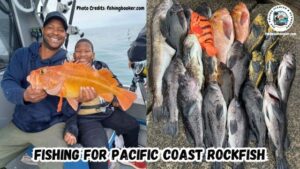
- Z-Man Big BallerZ

- 6 Tips for Choosing The Right Waders For Saltwater Fishing
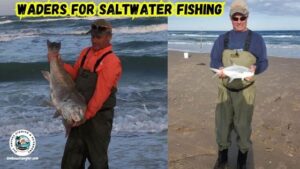
- Piscifun Salis X Trolling Reel Conventional Level Wind Reel
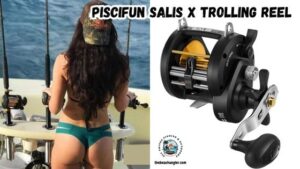
- Essential Baits And Lures For Inshore Saltwater Fishing

- Turtlebox Gen 3 Waterproof Speaker
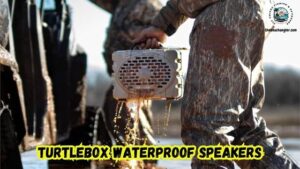
As always, stay safe, enjoy the journey, and please try to leave it cleaner than you found it. If you have any comments, questions, ideas, or suggestions, please leave them in the comment section below, and I’ll get back to you ASAP. You can follow us on Facebook: Rex The Beach Angler, Instagram: thebeachangler7, Twitter: @AnglerBeach, and YouTube: Man Art Creations.
P.S. Thanks so much for checking out our blog; we really appreciate it. Just so you know, we may receive a commission if you click on some of the links that appear on our site. This helps us keep our content free and up-to-date for everyone. We appreciate your support!
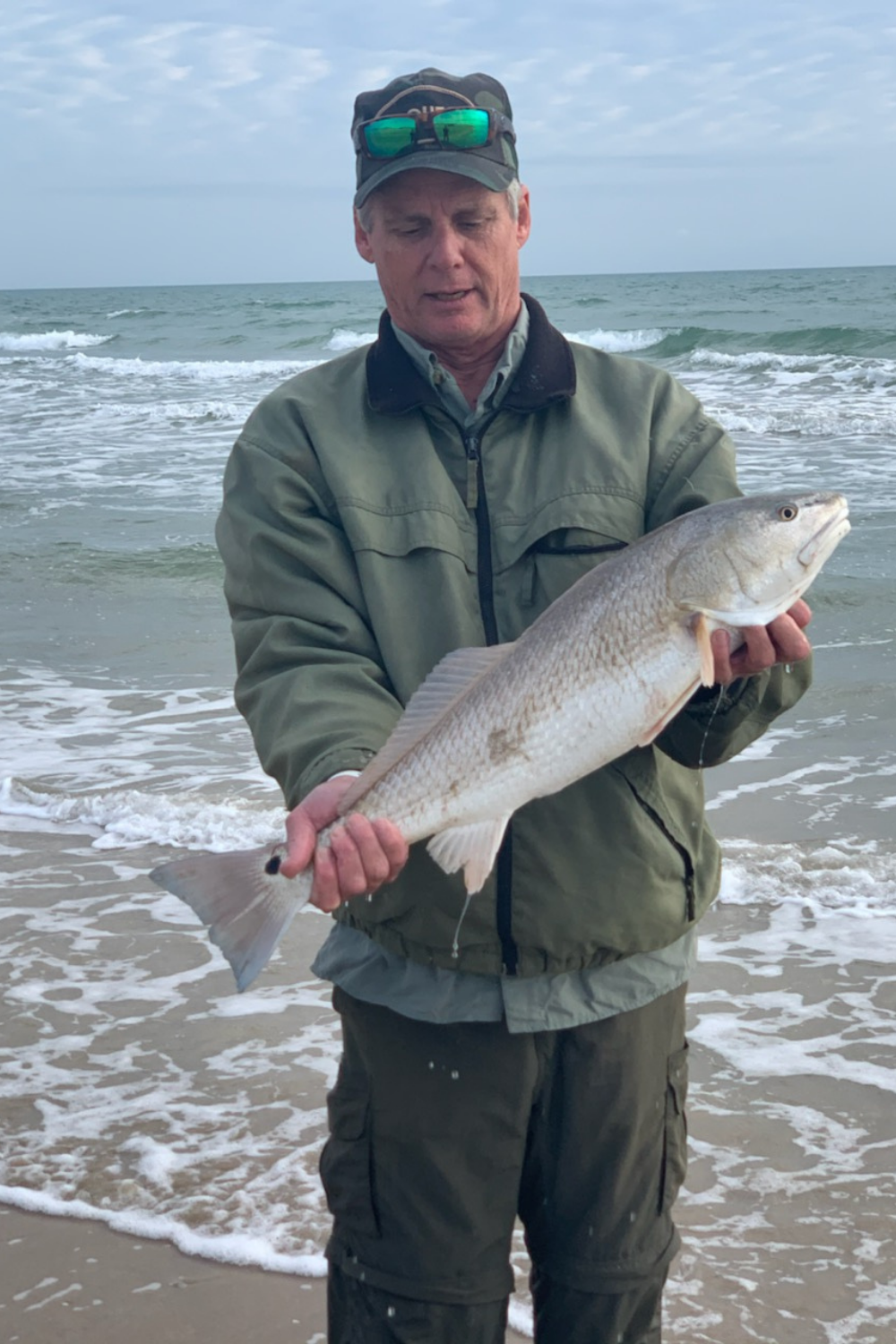
A life long surf fisherman with 50+ years of experience, I am also an avid hunter and outdoorsman. I will be sharing my passion for the outdoors with you so be prepared for hunting, fishing, camping, hiking and more. Along with gear reviews and the latest trends and innovations in the outdoor industry.
